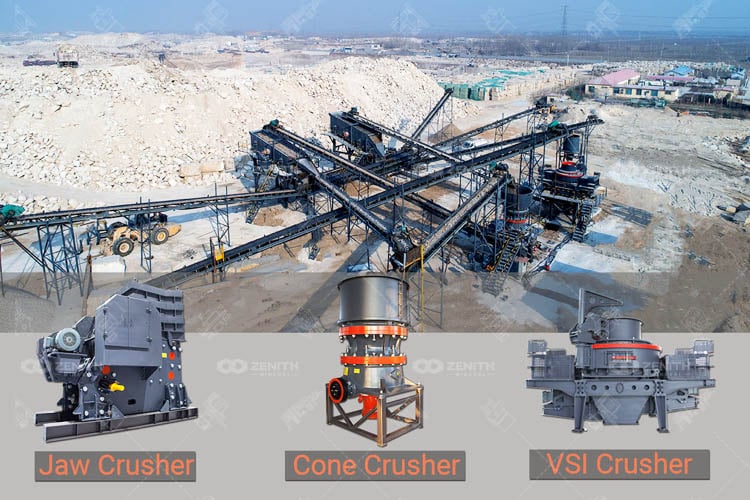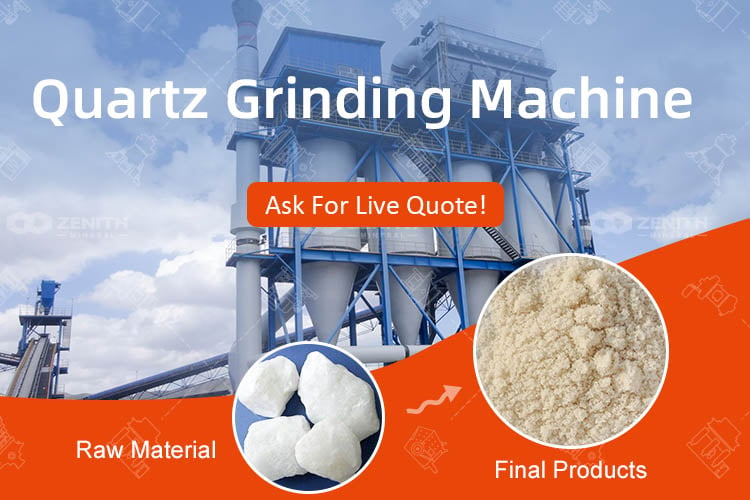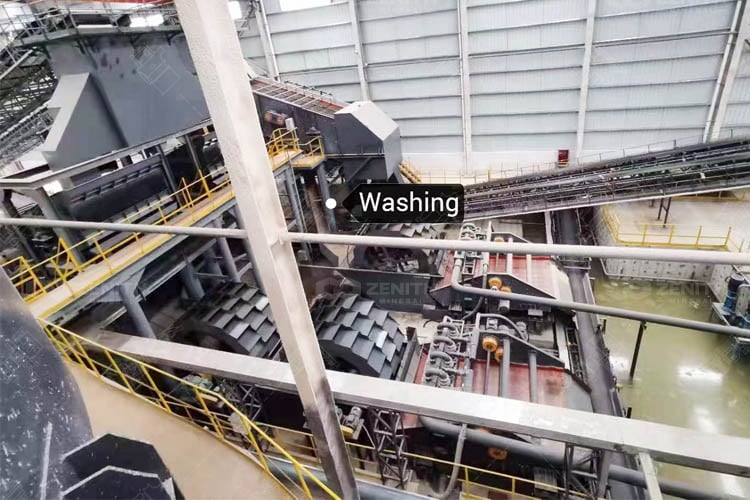How to Transform Quartz Rock into Silica Sand?
Quartz is one of the most abundant minerals on Earth, renowned for its hardness, chemical inertness, and high silica content. Silica sand, primarily composed of silicon dioxide (SiO₂), is a valuable industrial material widely used in glass manufacturing, foundry casting, construction, and even in the production of silicon-based chemicals and electronics.
Transforming hard quartz rock into high-purity silica sand involves a multi-stage process of mining, crushing, grinding, and beneficiation to achieve the desired purity, grain size, and physical properties. The transformation is resource-intensive, requiring specialized equipment and careful process control to optimize yield and meet stringent quality specifications.
1. Raw Material Acquisition: Mining Quartz Rock
The journey from hard quartz rock to silica sand begins with mining. Quartz deposits are found in various geological formations, including quartzites, sandstones, and vein quartz. The choice of mining method depends on the deposit's characteristics (e.g., depth, overburden, hardness, and purity).
The mined raw material, known as run-of-mine (ROM) ore, is typically heterogeneous in size, ranging from large boulders to smaller fragments.
2. Primary Size Reduction: Crushing
Upon arrival at the processing plant, the ROM quartz rock undergoes crushing, a mechanical process to reduce its size. This is a staged process to achieve progressively finer material.
- Primary Crushing: Large gyratory or jaw crushers are used to reduce the quarried boulders to a size typically between 150 mm and 300 mm. These robust machines are designed to handle extremely hard and abrasive materials.
- Secondary Crushing: The output from the primary crusher is then fed into secondary crushers, such as cone crushers or impact crushers. These machines further reduce the material to sizes ranging from 25 mm to 75 mm.
- Tertiary Crushing (Optional): Depending on the desired final product size and the hardness of the quartz, a third stage of crushing might be employed, often using finer cone crushers or vertical shaft impact (VSI) crushers, which can produce a more cubical product and reduce material down to a few millimeters.
Throughout the crushing stages, screening is critical. Vibrating screens separate material by size, allowing appropriately sized particles to pass to the next stage while larger particles are recirculated for further crushing. This ensures efficient energy use and prevents overloading of subsequent equipment.

3. Fine Size Reduction: Grinding (Milling)
After crushing, the quartz aggregate is still too coarse for most silica sand applications and must undergo grinding, or milling, to achieve the desired particle size distribution. This process consumes significant energy.
- Rod Mills: These horizontal rotating cylinders contain steel rods that cascade and impact the quartz particles, grinding them to a finer consistency. Rod mills are effective for producing a relatively narrow particle size distribution and are often used for coarser sand products.
- Ball Mills: Similar to rod mills but using steel balls as the grinding media. Ball mills are capable of producing much finer particles and are essential when very fine silica flours or specific particle size distributions are required.
- Vertical Roller Mills (VRMs): These mills use large rollers to grind material against a rotating table. They are energy-efficient and suitable for producing fine powders, though less common for traditional silica sand production than for other industrial minerals.
The grinding process can be performed wet or dry. Wet grinding, often in a slurry, improves grinding efficiency and facilitates subsequent washing and classification processes.
4. Beneficiation: Enhancing Purity and Quality
Once the quartz is reduced to sand-sized particles, beneficiation processes are employed to remove impurities, classify the sand by size, and improve its overall quality. The specific beneficiation steps depend heavily on the original purity of the quartz rock and the final product specifications.
Washing and Scrubbing:
- Attrition Scrubbers: These machines vigorously agitate a high-density sand slurry, causing sand grains to rub against each other. This mechanical scrubbing action effectively breaks down clay lumps, removes surface coatings (like iron oxides), and dislodges other loosely attached impurities.
- Washing Screens and Cyclones: After scrubbing, the sand is typically washed with water over screens or passed through hydrocyclones to remove liberated clays, silts, and fine organic matter. This step also helps in initial desliming.
Classification:
- Hydraulic Classifiers/Sizers: These devices use water flow and density differences to separate sand particles into various size fractions. This is critical for producing products with specific grain size distributions for different applications.
- Spiral Classifiers: These utilize a rotating spiral to convey coarser material upwards while finer particles overflow with water.
Magnetic Separation:
- High-Intensity Wet Magnetic Separators: Iron-bearing minerals (e.g., hematite, limonite, ilmenite) are common impurities that can significantly affect the quality of silica sand, especially for glassmaking where even trace amounts of iron can cause discoloration. High-intensity magnetic separators use powerful magnetic fields to attract and remove these weakly magnetic impurities from the sand slurry. Both rare-earth roll and induced roll wet magnetic separators are commonly used.
Flotation (Less Common but Used for Specific Impurities):
- Froth Flotation: This process can be used to remove specific impurities like feldspar, mica, or certain heavy minerals that are not effectively removed by magnetic separation or scrubbing. Chemical reagents (collectors, frothers) are added to a slurry to selectively make target impurity particles hydrophobic, causing them to attach to air bubbles and float to the surface as a froth, which is then skimmed off.
Acid Leaching (For High-Purity Applications):
- For ultra-high-purity silica sand required in specialized applications (e.g., optical fibers, semiconductors), acid leaching may be employed. Dilute hydrochloric or sulfuric acid is used to dissolve remaining metallic impurities, particularly iron and aluminum, from the surface of the quartz grains. This is a costly and environmentally sensitive process, requiring careful handling and neutralization of acidic waste.
5. Dewatering and Drying
After beneficiation, the sand is in a slurry form and must be dewatered and dried.
Dewatering:
- Dewatering Screens: Vibrating screens with fine mesh remove a significant portion of the water.
- Hydrocyclones: Provide further dewatering and classification.
- Thickeners: Used to recover water from the fines generated during washing.
- Centrifuges or Vacuum Filters: Can be used for more complete dewatering, especially if a lower moisture content is required before drying.
Drying:
- Fluidized Bed Dryers: Hot air is blown through a bed of sand, suspending the particles and facilitating rapid and uniform drying.
- Rotary Dryers: The sand tumbles through a rotating drum heated by hot gases.
The drying process is crucial for achieving the specified moisture content, which is important for storage, transport, and further processing by the end-user.
6. Screening and Quality Control
The dried silica sand undergoes final screening to ensure it meets precise size specifications for various product grades. Multi-deck vibrating screens with different mesh sizes are used to separate the sand into different commercial products.
Challenges and Environmental Considerations
Transforming hard quartz rock into high-quality silica sand presents several challenges:
- Abrasiveness of Quartz: Quartz is very hard and abrasive (Mohs hardness of 7), leading to significant wear and tear on crushing and grinding equipment. This necessitates the use of wear-resistant materials and regular maintenance, increasing operational costs.
- Energy Consumption: Crushing and grinding are energy-intensive processes, contributing to a significant portion of the overall production cost.
- Water Management: The wet processing methods require substantial amounts of water. Efficient water recycling and responsible wastewater management are critical for environmental compliance and sustainability.
- Dust Control: Dry crushing, screening, and handling generate significant dust, requiring effective dust suppression and collection systems to protect worker health and the environment.
- Waste Management: Tailings (fine waste material) from the beneficiation process need proper management and disposal in engineered tailings dams to prevent environmental contamination.
Transforming hard quartz rock into high-quality silica sand is a complex, multi-step process involving mining, crushing, grinding, washing, beneficiation, and drying. Each stage requires specialized equipment and careful control to maximize silica purity and meet industrial demands.



